Lardos Short River Walk
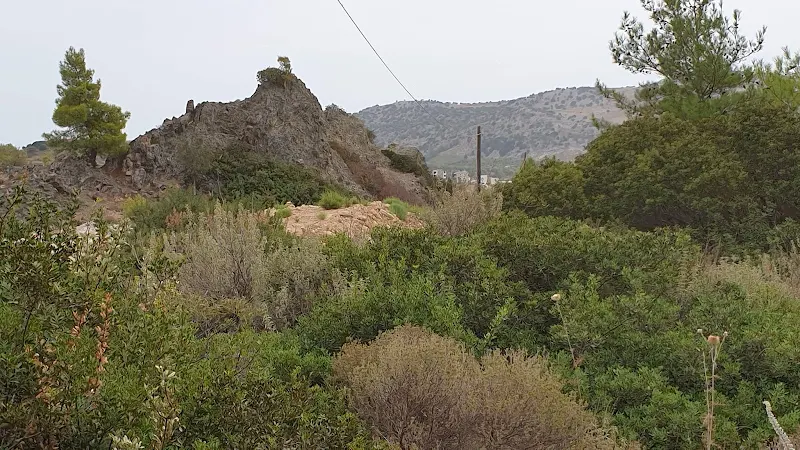
An easy ramble along the river out of Lardos
An easy meander into the Rhodian countryside that can be embraced by just about anyone. The route follows the river which is dry for most of the year. There are a few chapels encountered on route which will amaze the visitor in their brightly coloured frescoes. A great walk for the Rhodes novice to see more than the usual tourist entrapments.
Short Circular Lardos River Walk - Essential Information
Walk Statistics:
- Start location: Lardos
- Distance: km ( miles)
- Total Gain: metre ( ft)
- Total Descent: metre ( ft)
- Min Height: metre ( ft)
- Max Height: metre ( ft)
- Walk Time:
- Walk type: Circular
- Walk Grade: Easy to navigate
- Terrain: Dirt/paved tracks
Maps:
The following maps and services can assist in navigating this route. There are links to printed maps and links to downloadable GPX route data for importing into navigational software and apps.
- GPX Route File
Accommodation:
Pefkos Blue Studios, PefkosapartmentView in Google Map
- Website
- http://www.pefkosbluehotel.com/
- Description
- Pefkos Blue formerly known as Dimitri Studios, offering self catering apartment studios overlooking Pefkos village with splendid views across the bay. This is probably the best place in Pefkos if you want to be away from the village. Above the hubbub it offers unrivalled views and a quiet location.
Transport:
Details of public transport that is required for the walk
Rhodes Public Transport - Bus Service
- Service Details
- Gennadi to Rhodes Town - KTEL Rhodes Public bus service serving the East Coast of Rhodes linking Gennadi, Kiotari, Lardos, Pefkos, Kalathos, Archangelos, Afandou, Faliraki and Rhodes Town
- Timetable
- Available here
Route Verification Details
- Date of Walk: 2020-10-08
- Walk Time: 11:30 to 13:30
- Walkers: Griffmonster, Kat
- Weather Conditions: Very warm but overcast day
Walk Notes
Any newcomer to the island of Rhodes who seeks more than a sunbed by the pool or beach may well be apprehensive when wandering away from the principle roads, towns or villages. There are a multitude of tracks and paths and there appears to be no definitive map that plots all the routes. Unless one uses a GPS app then it can lead to apprehension of getting lost in the wilderness. This is to be expected.
In addition to newcomers wanting to explore, it is also worth considering that it does take some time to acclimatise to the heat especially arriving from more temperate environments such as Britain. This can be achieved by taking it easy for a day or two where a simple wander such as this is not taxing on the body and eases one into more adventurous expeditions. On this particular occasion, the day was very much overcast but with this was a closeness of the heat that sapped the energy.
Whatever makes you choose this simple walk, it has to be said that it is easy to follow, gives a taste of navigating off the beaten track and, for any novice, provides a certain sense of achievement to inspire further more adventurous exploration of the island. As with any of the walks on this site, there are chapels to visit with their richly decorated murals, icons and frescoes to admire.
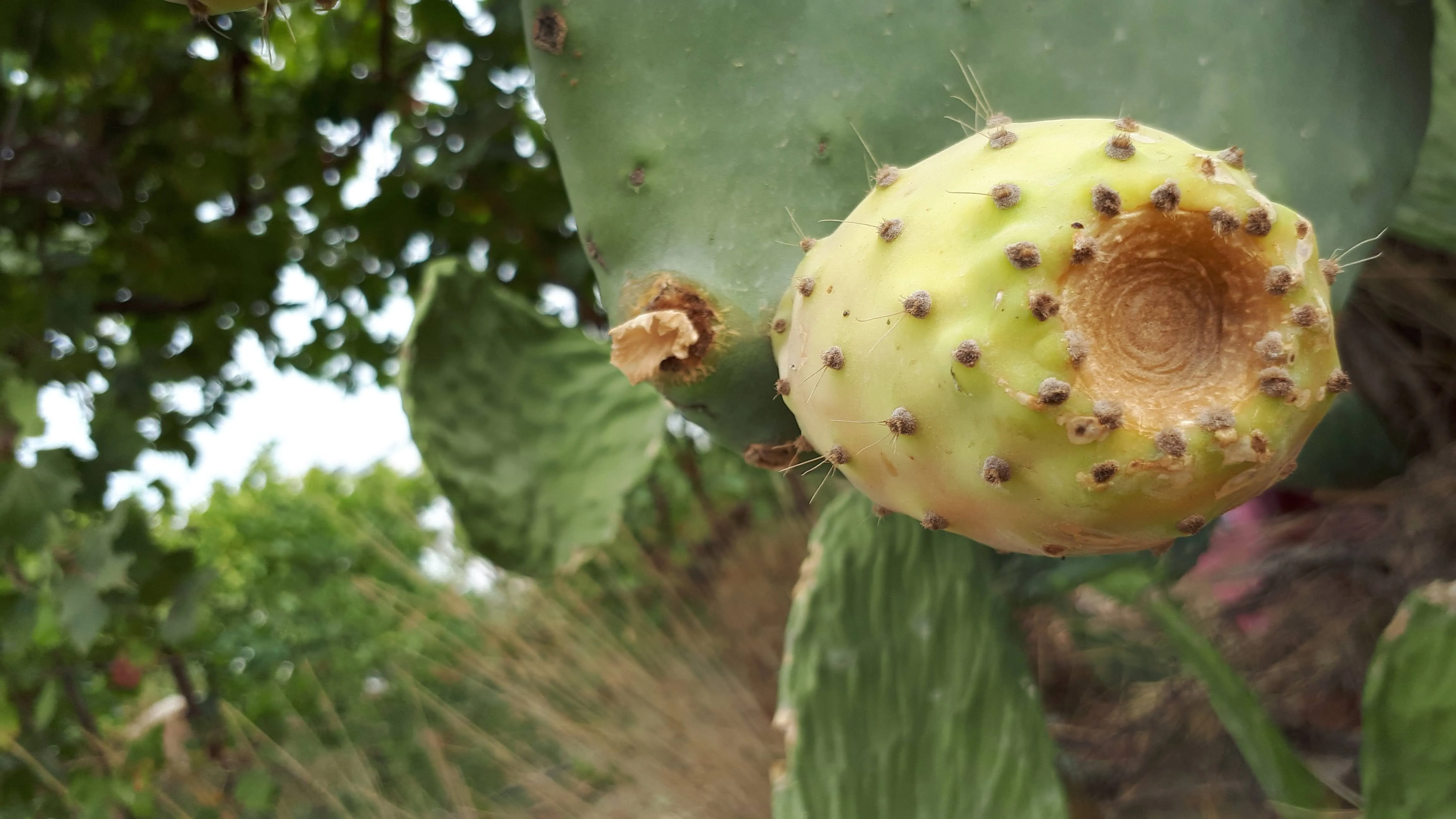
We start the walk from Lardos Square, the hub of this typical Rhodian working village, then walk through the narrow streets that give the flavour of domestic life. The resplendent bougainvillea that is in full flower during the autumn months adorns the walls around the houses. As one leaves the village to wander out into the countryside there is prickly pear cacti, donkeys stabled in the olive groves, small holdings with the occasional dog that offers a bark at the passers by. The dirt track that we take follows the course of the river. On this occasion, during 2020, the river was masked by mounds of stony debris which had been cleared from the river channel as a result of the exceptional rains the previous winter which saw torrents of water cascading down from the mountains. It is hard to believe such a dry river bed would ever be the scene of torrents of water racing to the sea.
Further along the track we come to a small chapel atop a flight of stone steps. This is dedicated to St Seraphin, Άγιος Σεραφείμ
. Presumably this dedication is in honour of St Seraphim of Sarov, a 18th century Russian holy man canonized in 1903.
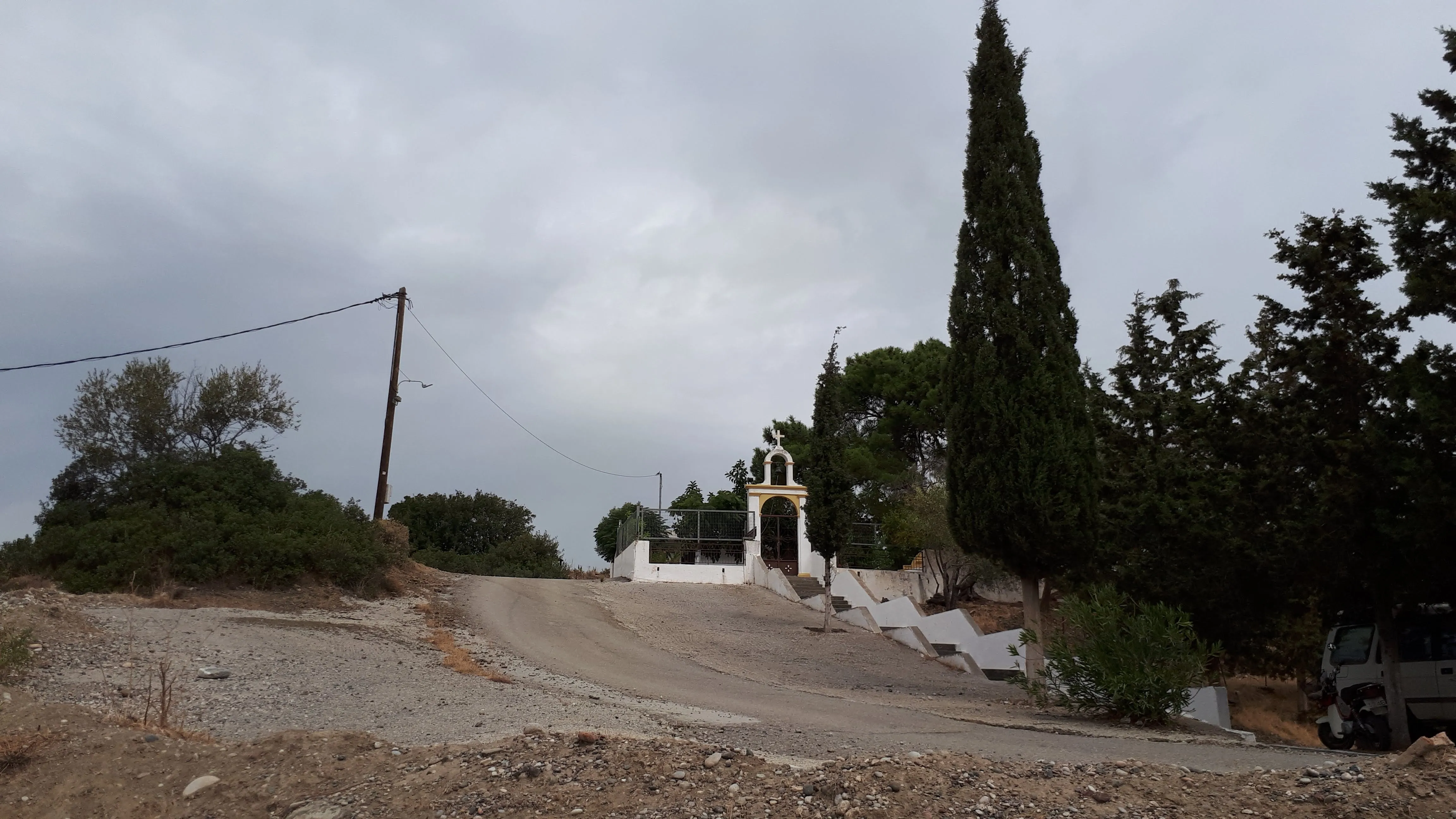
The track veers off to the left of the chapel to further pursue the course of the river. Soon we come to a ruin on the right, set in the sides of a hill. It is easy to overlook this as one wanders along the track since it blends into the landscape. There is a low crumbling wall that is fenced off at the base of the hill, then to the left a more substantial structure that is as tall as the hill it is built upon. This wall appears to be quite substantial, the thickness that one associates with a castle wall. This certainly does not look like a ruin of a humble shepherds house, so what can it be? Lardos does have a castle, as referenced by in the Lardos Castle Walk, so was this another fortification or is it something more modern? Viewing from above on the google earth image, a shadow is revealed that gives the impression that this is a hollow rectangular structure although too small to be a dwelling. Was it a chimney? A substantial chimney if it was so could it have been a chimney to a kiln? Or was it just a storage room? A lot of questions.
It is such features, together with a reminding photo of the structure that begins any investigation when one sets out across the Rhodes countryside. This is how we discovered Lardos castle, at the time it was not documented in any tourist literature and the distant ruin fired the imagination to discover exactly what this was. The ruin encountered here does warrant a return visit to try to establish more hands on information of the structure as little can be found of any documented ruin. Rhodes has many secrets, and all we have to do is walk and ask questions.
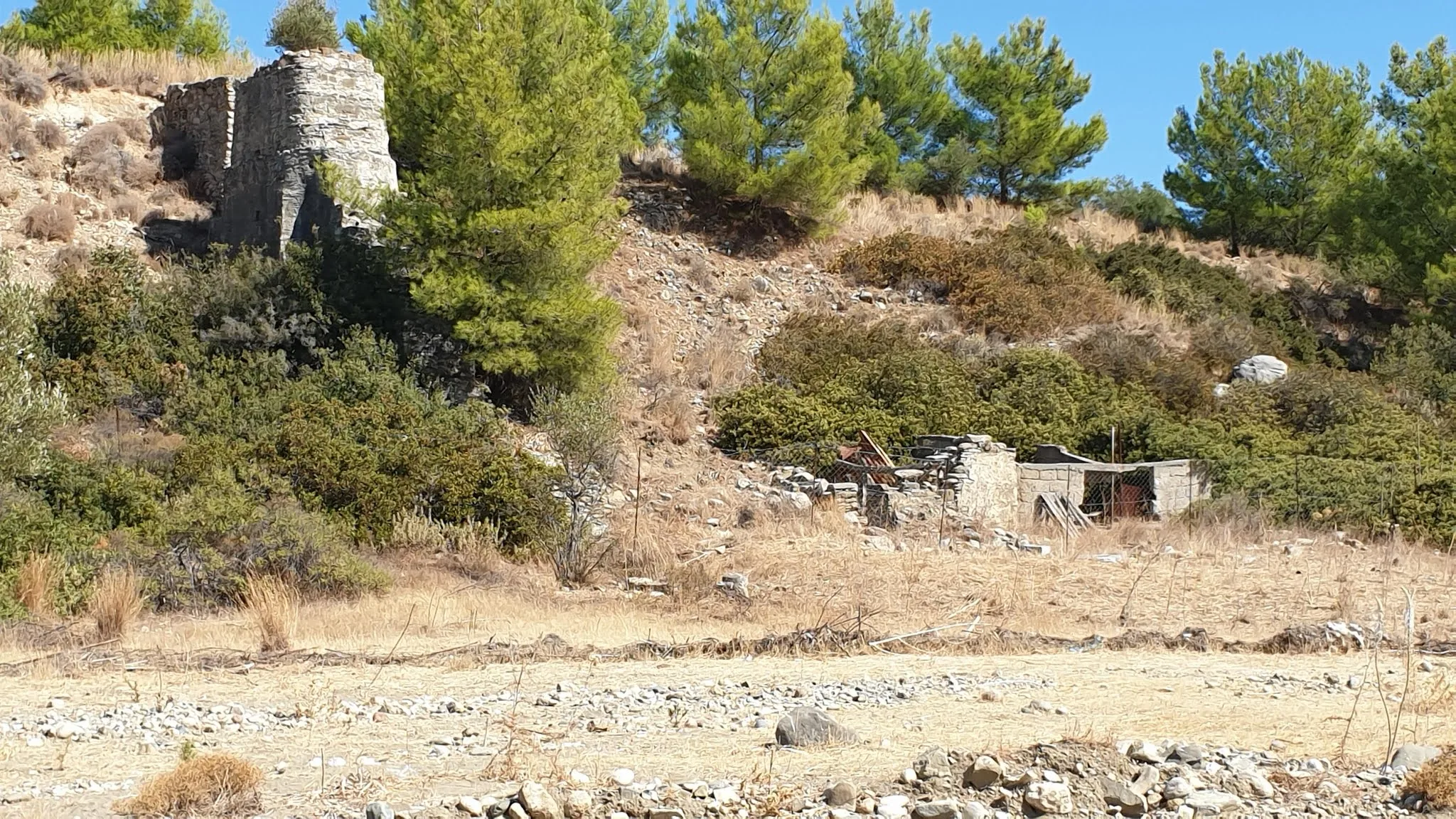
We continue through the scrub. There are olive groves although not as dense as some of the groves one can witness in more fertile soils. There are garbage dumps, not a pretty sight but this is the reality of modern civilisation. Eventually we come to a car scrap yard on the left. When I say scrap yard this is no more than a whole load of broken motors and vans assembled in a compound amongst the trees and vegetation.
At the far end of the scrap yard is a track that leads down to the river bed. This is where we cross the river. On this occasion it is a bit of a scramble on the far side due to the previous years rain bringing down so much debris. Even so, it is not difficult to cross and the route had already been redefined by a summer of crossings by all manner of perambulations and mechanisations. This is one of the amazing things about Rhodes people, despite set backs and calamities, despite broken bridges and wiped out roads, they soon implement a make shift alternative. They seem to get on with the job without complaint or waiting for someone in authority to accomplish the task.
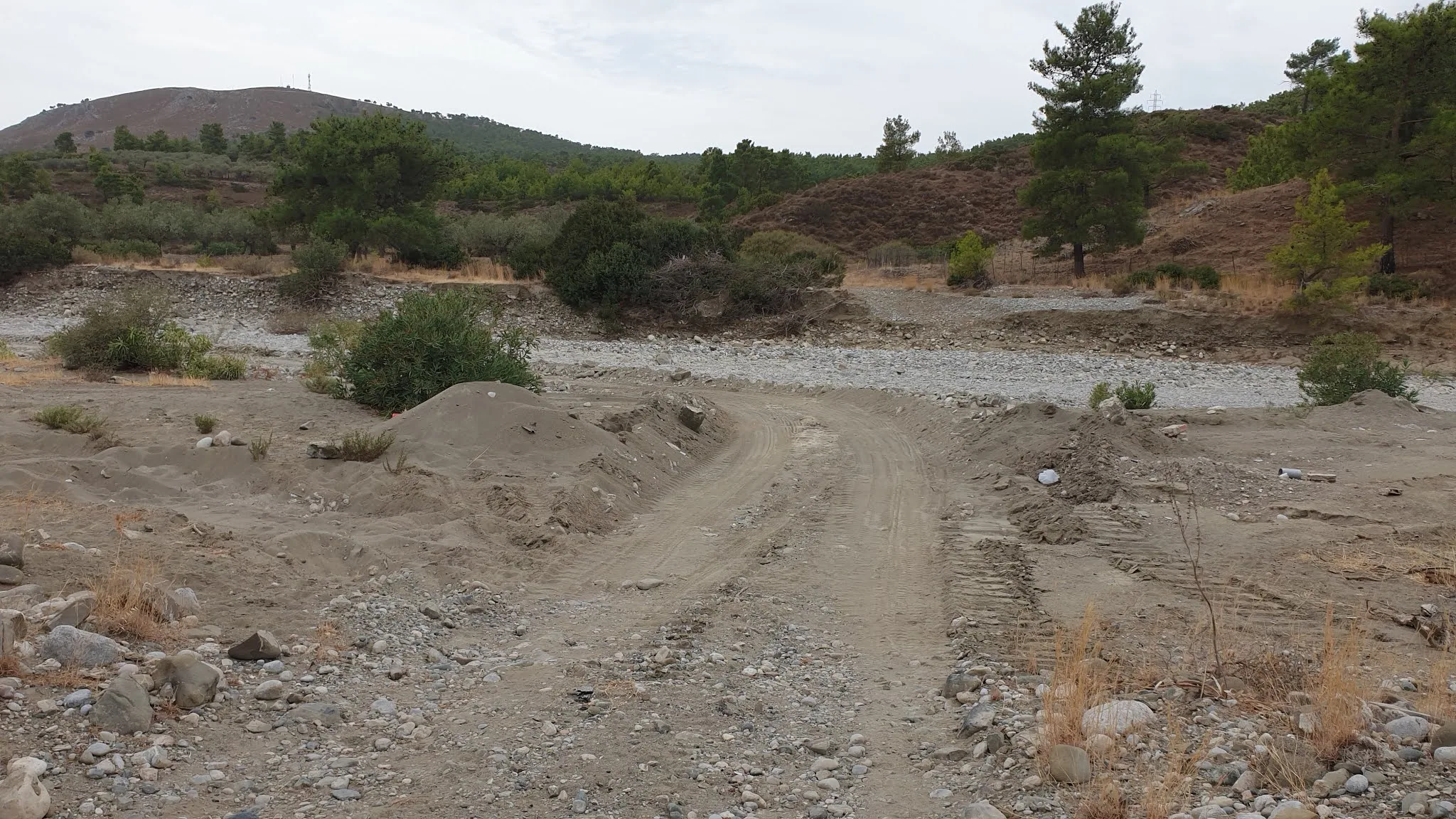
Now comes a small bit of adventure that will hopefully inspire those who have never ventured off the beaten track to seek further more adventurous exploration further afield. The beauty of rural Rhodes are the numerous tracks and paths with little boundaries. This can be confusing and one can be apprehensive about treading into the unknown, thinking that one is trespassing onto someone's land. Put these fears aside and from the opposite bank walk to the left into an olive grove. There is a dirt track that leads the way into the grove then one needs to turn and keep between the first and second row of olive trees to wander to the far edge of the grove. It is fairly obvious as there are indications that both vehicles and boots have come this way.
This leads out onto a broad dirt track which curves around to the right. Follow this through a more lush landscape full of trees and vegetation and it soon leads out onto a surfaced road, the road from Moni Ipseni. At this junction is a painted blue arrow pointing down the way we had just walked. This does appear to have been left by other walking groups to provide direction to those without the mapping skills or GPS apps available. Cairns, dots of paint on stones and markers on trees are regularly encountered out in the wilds offering a simple form of waymarkers.
Turn left onto the road for an easy walk back to Lardos. There is still plenty to see with the trees and scenery and wildlife, including plenty of goats.
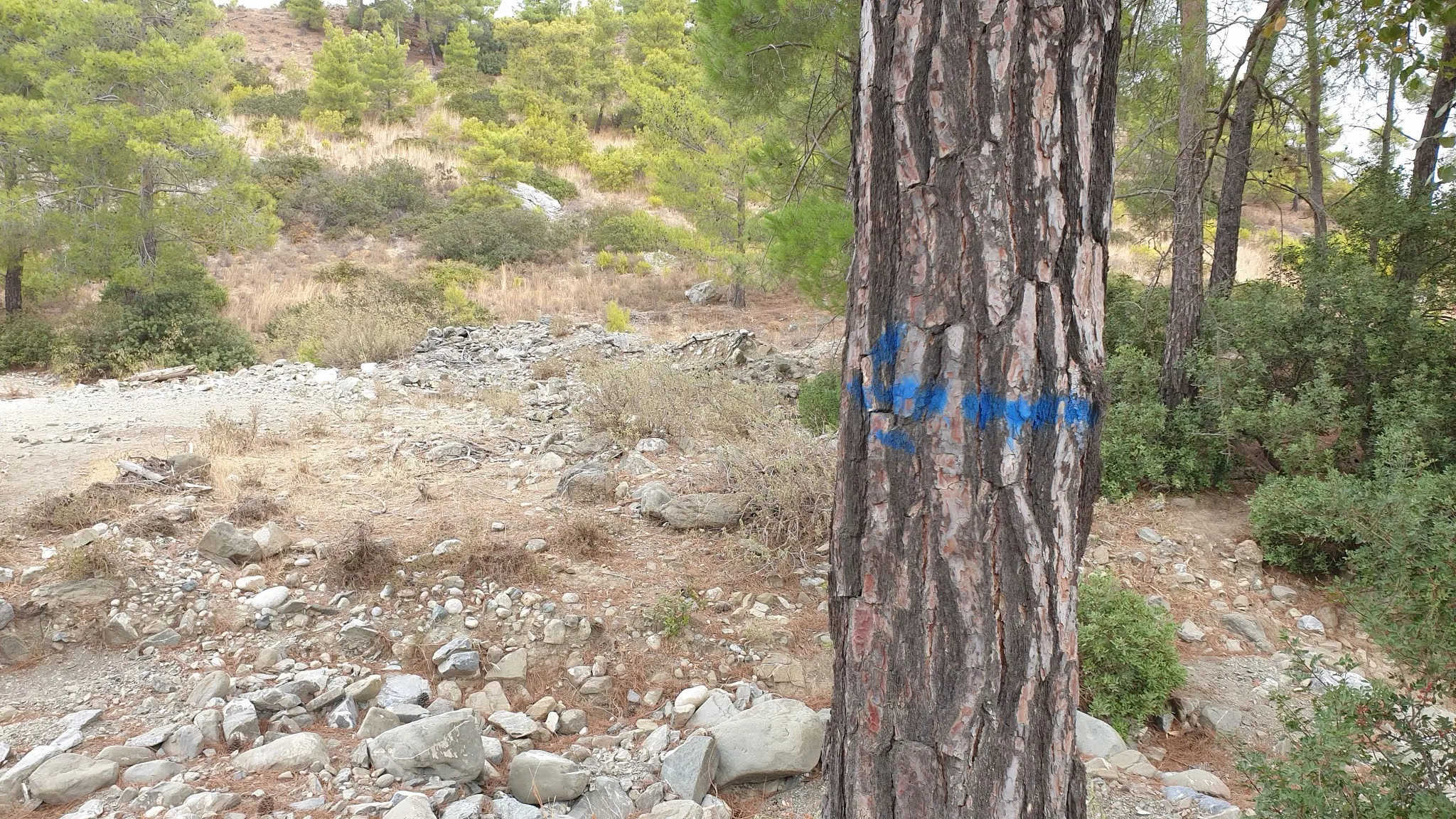
Eventually we come to a chapel on the right, the Monastery Apostle Philip (ΙΕΡΑ ΜΟΝΗ ΑΠΟΣΤΟΛΟΥ ΦΙΛΙΠΠΟ
Υ). The grounds to the chapel are entered via a stone gateway that doubles as a bell tower. The gate is locked but a key hangs from the lock and a sign to the right informs the visitor in both Greek and English to Please close the door
. This is merely to remind visitors to keep the metal gates closed and prevent the wild goats from feasting on the plants within the compound.
The complex is centred around a magnificent clean stone rectangular building topped with orderly Greek red clay roof tiles. The building sits in an east-west orientation, diagonally across the courtyard, and arched windows decorate the walls, two on either side of the building and one at the rear for light to the chapel sanctuary. Potted plants are placed around the perimeter of chapel and the courtyard is bounded by neatly kept perimeter walls, decorated with gardens and trees. A flagpole flies the double headed eagle flag. This emblem, depicted on a yellow background, is the Byzantine Imperial flag that was adopted by the Greek Orthodox Churches.
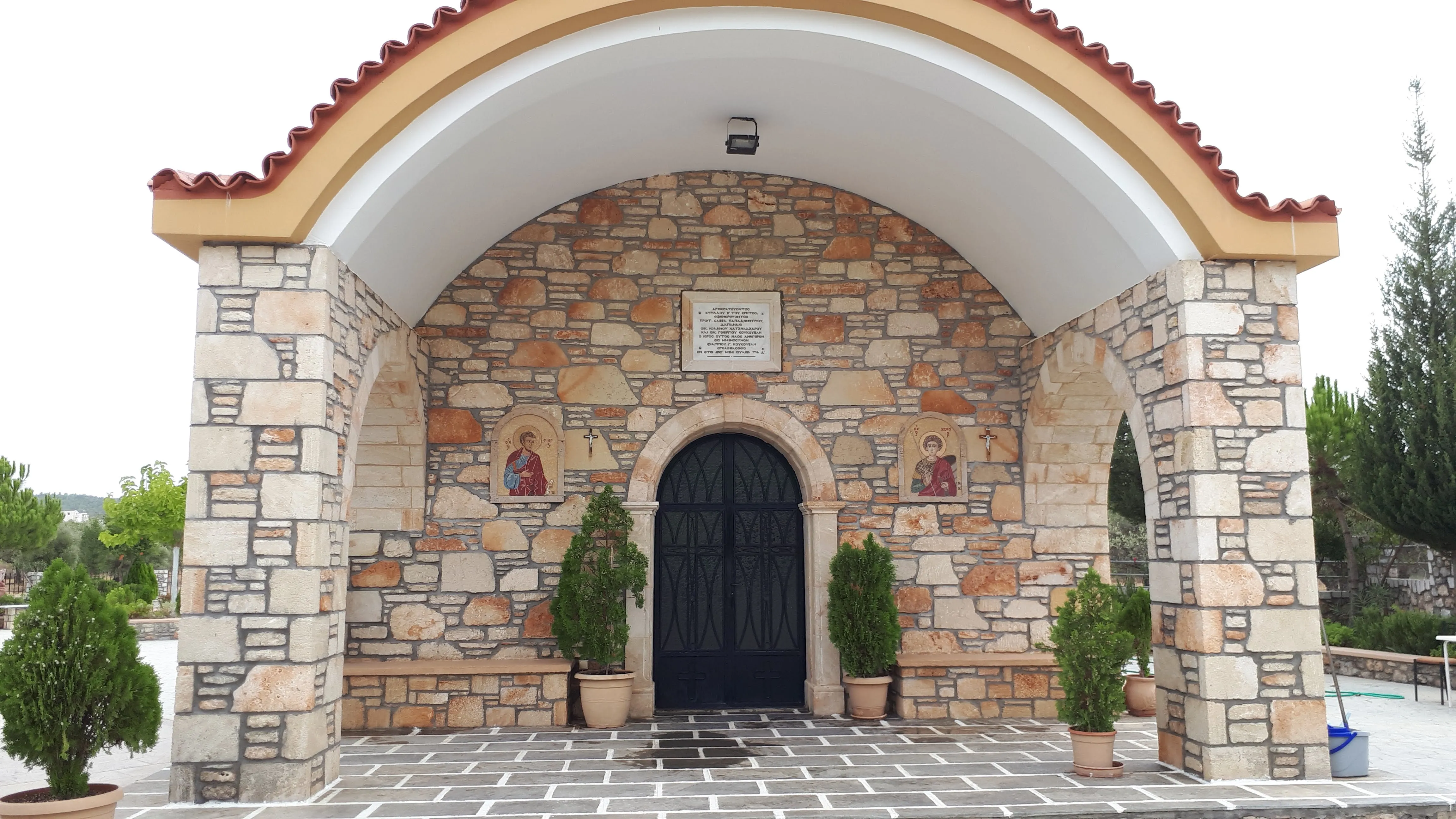
The interior is as well kept, clean and tidy as the exterior. The walls and ceilings are adorned with colourful frescos and icons of the saints. Candelabras drop from the ceiling and candles sit unlit. You really do not have to have faith to glory in the magnificence of this art and it really is worth taking time to stand in the solitude of the silent chapel and just reflect upon these wonders.
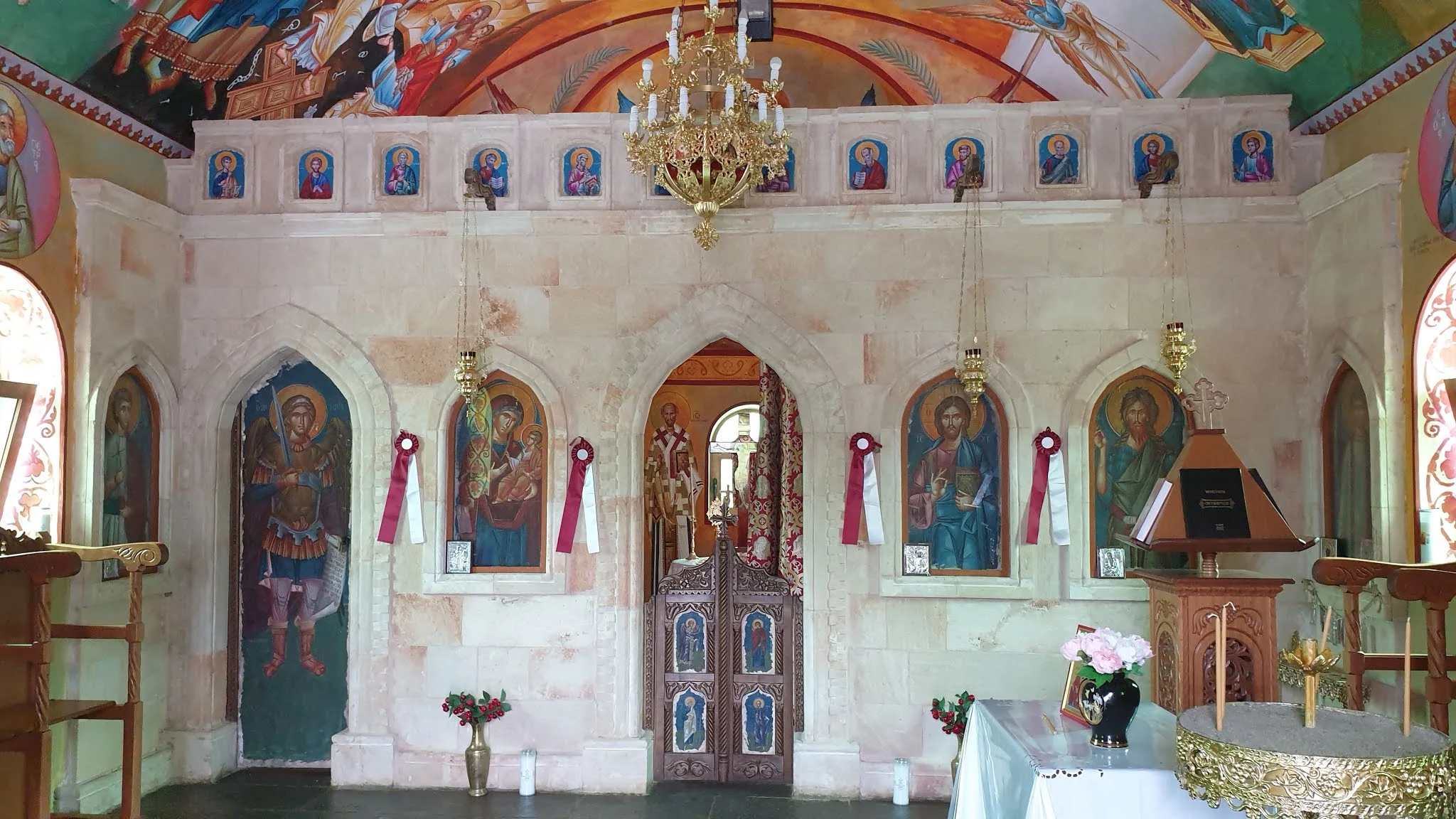
The domed sanctuary ceiling appears to depict Christ in heaven with angels on either side and the earth below with land and sea and a shepherd standing in awe. Another fresco depicts Christ being baptised in the river Jordan. To the left is John the Baptist anointing the head of Christ. There is so much more to take in.
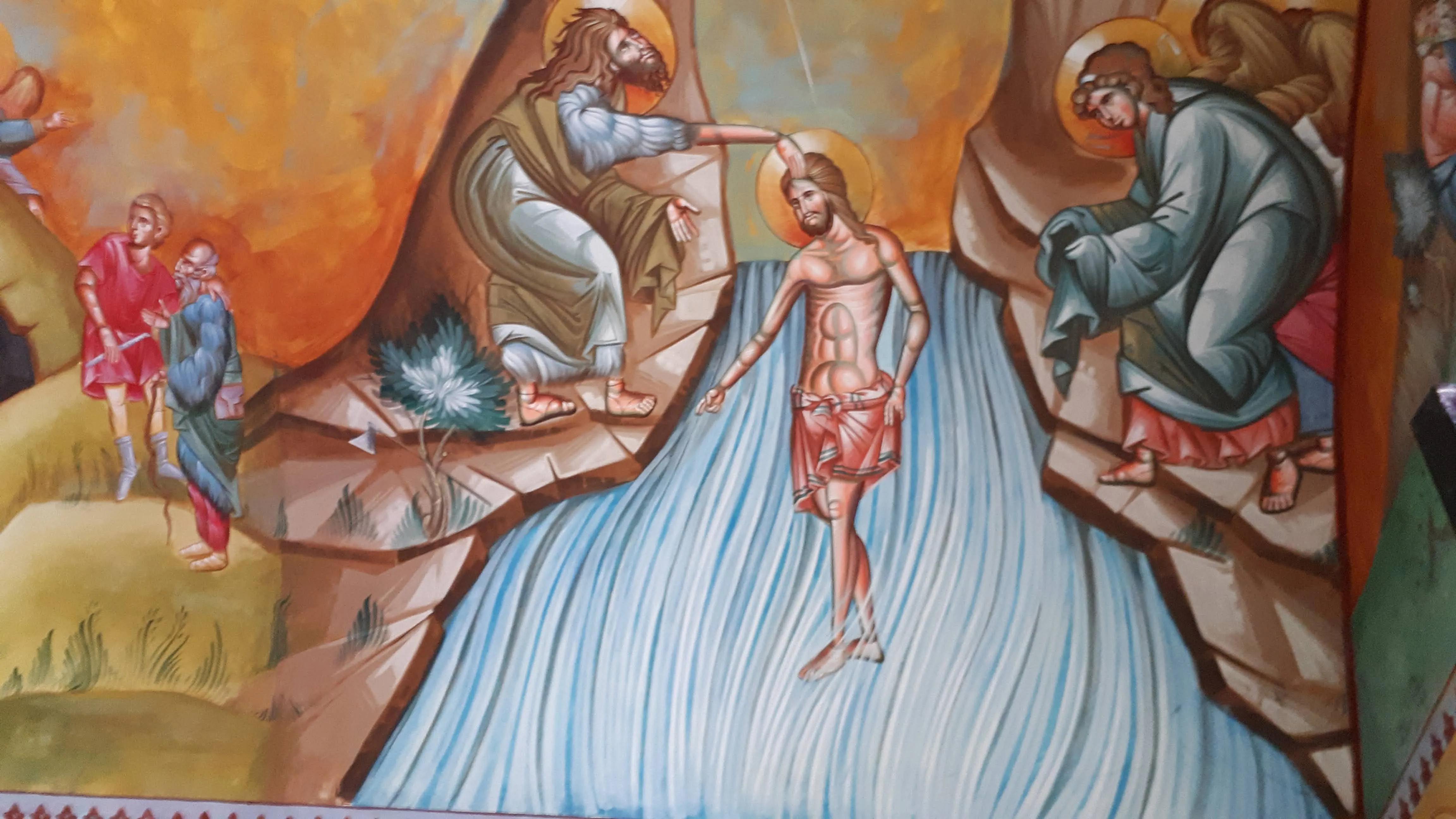
Returning to the exterior of the chapel, one observes that, to all intents and purposes, this construction looks modern although it should be stated that judgment of appearance can be profoundly wrong, as experienced when visiting other chapels on the island which are centuries old. However, there is a sign on the southern side of the chapel that appears to have some dedication inscribed upon it. This is embedded into the stone wall of the building and is under a similarly embedded stone with a crucifix and the date 2013 integrated into the cross. Below this is placed a simple wreath. Does this indicate that the chapel was built during that year? It is uncertain. The full text reads as
ΜΝΗΣΘΗΤΙ ΚΥΡΙΕ ΤΟΥ ΔΟΥΛΟΥ ΣΟΥ
ΦΙΛΠΠΟΥ ΚΟΥΚΟΥΒΑΗ
ΕΝ ΘΑΛΑΣΣΗ ΠΝΙΓΕΝΤΟΣ ΕΝ ΤΗ ΠΡΟΣΠΑΘΕΙΑ ΑΥΤΟΥ ΟΠΩΣ ΣΩΣΗ ΚΙΝΔΥΝΕΥΟΝΤΑΣ ΣΥΝΑΝΘΡΩΠΟΥΣ ΤΟΥ
ΜΗΝΙ ΟΚΤΩΒΡΙΩ ΣΩΤΗΡΙΟΥ ΕΤΟΥΣ 2013
which, employing an online translation application, reads:
REMEMBER, O LORD, THY SERVANT
PHILIP KOUKOUVAI
DROWNED AT SEA IN HIS ATTEMPT TO SAVE HIS FELLOW HUMAN BEINGS
MONTH OF OCTOBER 2013
It is easy for the visitor to jump to the conclusion that this refers to the Apostle Philip, for which the Chapel is dedicated to. However if we take such a stance, then reading various documentary texts of the life of the Apostle reveals that it is uncertain how he ended his life. Various texts provide numerous conclusions as to his demise, natural causes, beheading and crucifixion, but none appear to mention drowning. What is agreed upon is that his death occurred in the first century AD, possibly around 80AD. Therefore, maybe this inscription is a dedication to a Philip Koukouvai who drowned during some much more recent tragic event. Was this chapel constructed in memory of this man who gave his life whilst saving others?
To try to answer this, we should first question why there are so many chapels across the Rhodes landscape, varying from small ornamental miniature roadside chapels to large grand structures full of majesty and glory, and all decorated and maintained with such attention and dedication. From what I can gather from perusal of of both Greek and tourist information sources is that the more modern monasteries and chapels are built for various reasons. These can be as a sign of devotion to commemorate a location of a miraculous event down to no more than a provision of shelter from the heat for travellers, where such folk can take the opportunity to rest and pray. Such remote located chapels are certainly a welcome retreat for walkers such as ourselves on some of the more demanding expeditions that we undertake, and even though we are not devoutly religious, it is nonetheless humbling to be able to take up the offer of such anonymous hospitality on route.
Modern Chapels can also be constructed as a shrine to a dearly departed family member. This is certainly the case of roadside shrines, known as kandilakia (καντηλάκια
), which are frequently encountered on ones travels, easily seen by bus or car. Given the fact of the high incidence of road accident mortality across Greece, it is not surprising there are so many, often adorned with photos and flowers. Generally such shrines are no more than ornamental models of chapels. Similarly, and presumably for those who can afford it, larger Chapels can be constructed as mausoleums for the bones of a family member who has suffered a tragic event. Given the inscription upon this chapel then this second suggestion would fit the bill here, this being a chapel constructed as a shrine to Philip Koukouvai who, it would appear, gave his life saving others in 2013.
This distinction of a family constructed chapel may also offer an explanation of the difference between the definitions of chapel (ΝΑΟΣ
) and, as is the case for this specific example, monastery (ΜΟΝΗ
). This is always a conundrum for any visitor to Greece where the names often appear to be interchangeable. Could it be that a chapel is a public building constructed by the church and a monastery is a privately funded building or shrine? This would offer a logical differentiation to why such names are applied but I would not take my word for it, I am only grasping at straws to provide a suitable proposition.
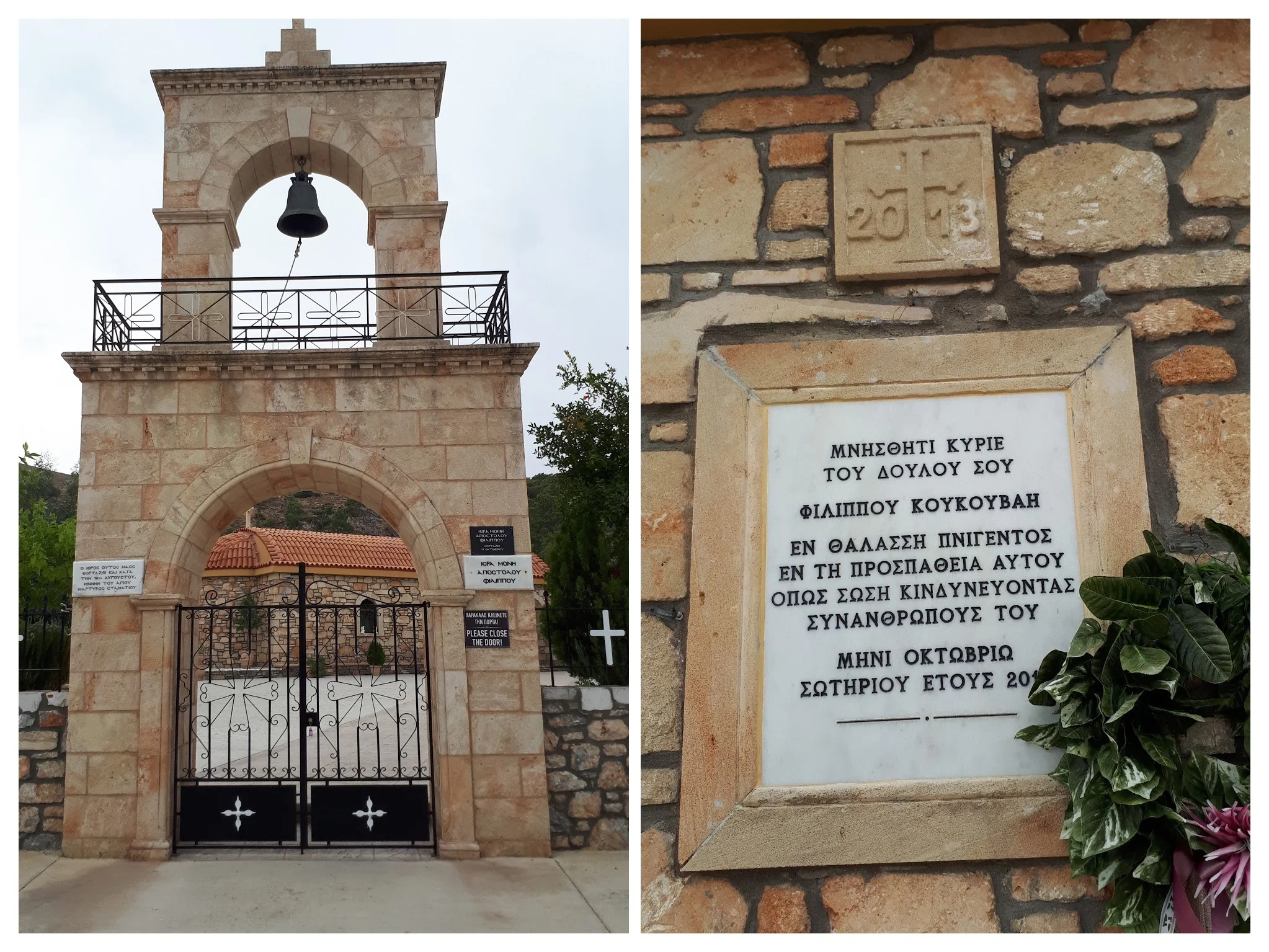
Another sign of note appears on the gatepost at the entrance to the Chapel
Ο ΙΕΡΟΣ ΟΥΤΟΣ ΝΑΟΣ ΕΟΡΤΑΖΕΙ ΚΑΙ ΚΑΤΑ ΤΗΝ 16 ΑΥΓΟΥΣΤΟΥ, ΜΝΗΜΗ ΤΟΥ ΑΓΙΟΥ ΜΑΡΤΥΡΟΣ ΣΤΑΜΑΤΙΟΥ
which translates as
THIS TEMPLE ALSO CELEBRATES ON THE 16TH OF AUGUST, THE MEMORY OF THE HOLY MARTYR STAMATIOS
St Stamatios was born in the 17th century in the village of Magnesia to the north west of Pelion, a mountain in the southeastern part of Thessaly in northern Greece. This period of history is a time when the land was under occupation by the Ottomans where the Muslim rulers oppressed the Christian inhabitants, imposing excessive taxes upon them. A delegation went to Constantinople to protest against this unfair taxation and in the melee that resulted Stamatios was separated out and brought before the Vizier. Despite imprisonment and torture he refused to renounce Christianity and convert to Islam and finally the Vizier ordered his beheading which happened on 16th August 1680.
And so, we continue our walk. Onward toward Lardos and after a further 0.5km, just off the route and well signed, is another little chapel. The sign clearly states in both Greek and English St Nikolas Church. A tall arched gateway with a bell atop provides the entrance. Unfortunately the gate is firmly locked on this occasion and the best we could do was admire the chapel from a distance.
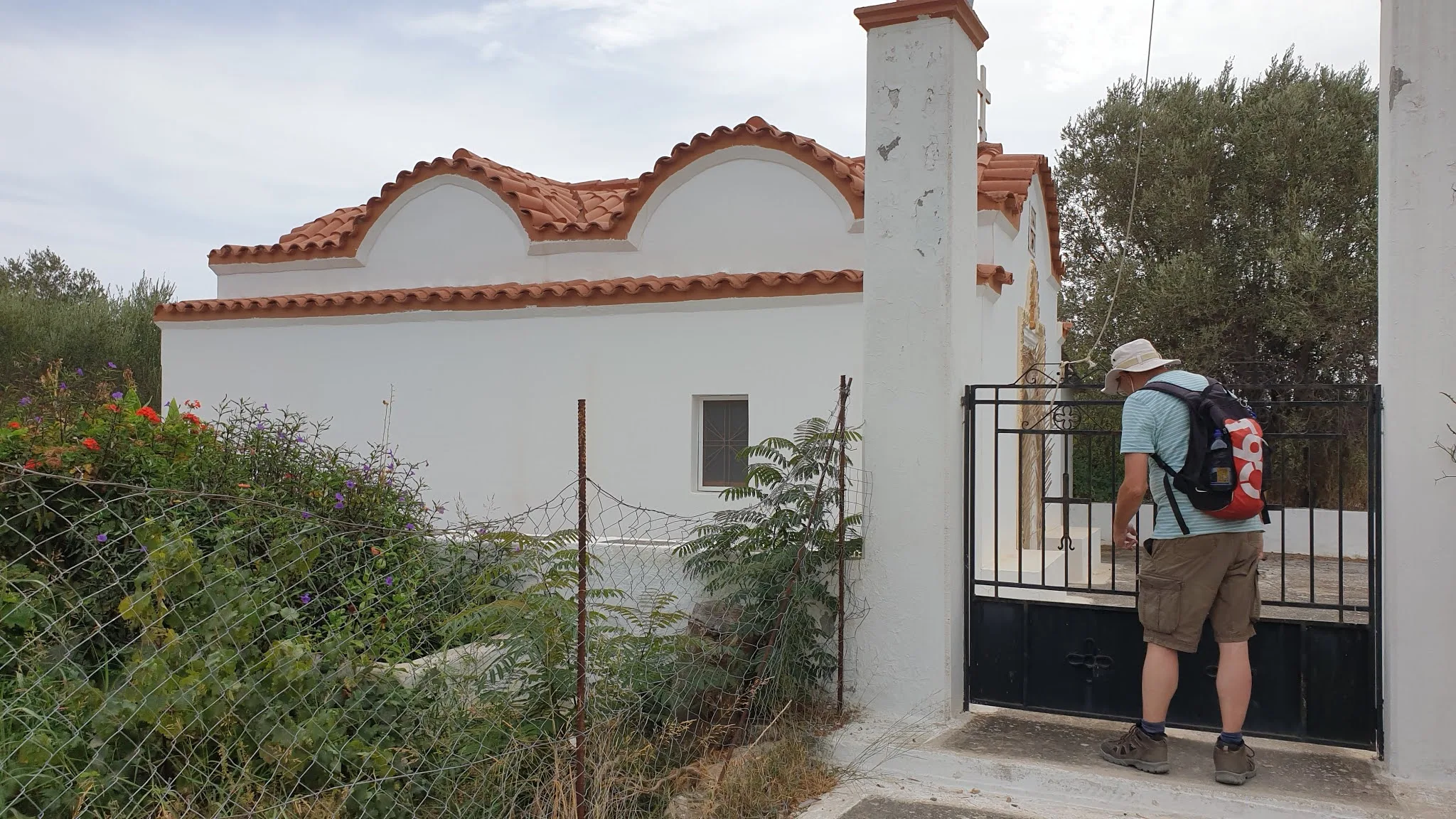
The route now leads down to the road back into Lardos, passing the local football stadium, with a very green turf considering the arid conditions that surround it. We then cross the bridge over the river. Dry with signs of vehicle tracks up and down its length, most likely from the diggers that have been clearing the debris washed down from the previous winter.
We now end the walk back at the centre of Lardos and take in a drink in Memories and watch the world go by for an hour or so. A time to reflect on the walk. It is not a huge ramble and it is a great way to introduce any newcomer to rural Rhodes, to try to fire the enthusiasm to explore off the beaten tourist track.
Directions
An easy ramble following the course of the Lardos river
Leave Lardos from the square, taking the road that runs directly through the square heading south east, with the water fountain on ones right and Memories bar on ones left. After 80m take the road on the right to continue through the village. At the end of the road, turn left then turn right to follow the river (dry bed) which is now on ones left. Keep to this for 440m until it junctions, bear left to continue following the river. After a further 470m one comes to a small compound on the left and a chapel atop a flight of steps on the right with tracks leading either side of the chapel and another track veering around to the left. Take this left track and keep to this for approx 1km until there is a car scrapyard on the left. Immediately beyond the scrap yard turn left and follow a track down onto the river bed. Cross directly over and up onto the opposite bank.
On the opposite side bear left following the rough track that leads into an olive grove which then bears slightly to the right and leads between the first and second rows of olive trees. This track is only roughly defined but is easy enough to follow. at the far end of the grove it leads out onto a dirt track. Turn right and follow this as it bends around several turns. This eventually meets up with the paved road that leads to the Moni Ipseni monastery. Turn left onto the road and keep to this for 1.8 km. This junctions with the principle road into Lardos. Turn left onto this road and follow this, across the river bridge and into Lardos, continuing through to the square where the route began.
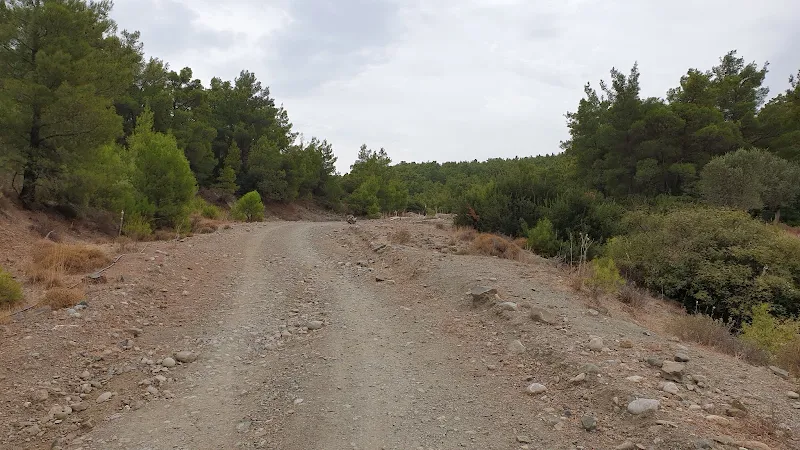
Refreshments
Memories, Lardos View in Google Map
- Address
- The Square, Lardos
The Facebook page for this village centre bar states Wonderful bar that serves breakfast and lunch, open all day and night serving amazing cocktails situated in the square of Lardos, come join us with any music of your choice!
This really encapsulates this lively and friendly bar. Always a cheerful welcome and what better place to sit, have a drink and relax watching the world enfold before you, not matter what time of the day or evening.
Whenever a ramble ends at Lardos, Memories is our place of choice for that long cooling drink to sooth all the worked up thirst from our adventures.

Summary of Document Changes
Last Updated: 2025-01-29
Distance:Short , Lardos ,





0 comments:
Post a Comment